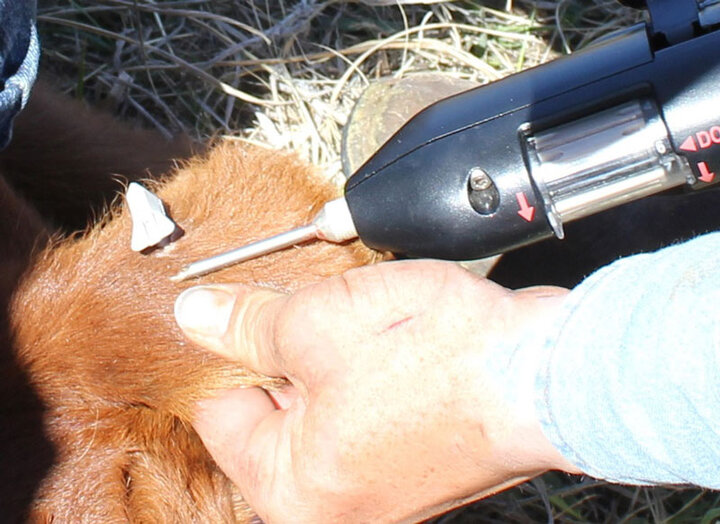As calving moves into full swing, many producers are thinking about vaccination programs they want to implement at branding. However, only a few are also considering how growth implants could be used as a management tool for the nursing calf.
Implants have been proven to improve gains by 4 to 5 percent, according to research from Oklahoma State University. This could translate to an additional 18-20 pounds of weaning weight.
Implants can be quickly administered at branding along with calfhood vaccinations. Some questions and answers about implants for nursing calves:
Will implanting nursing calves negatively impact finishing performance?
The best way to realize the benefits of an implantation strategy is to read and follow label instructions and recommended guidelines. Implant strategies should always start with the least aggressive implants for nursing calves followed by the most aggressive implants during the finishing phase.
There are many growth promoting implants available, some for nursing calves, some for stocker cattle, and others for finishing cattle. Studies have shown calves implanted from nursing through finishing did not experience poorer performance than calves implanted only during the finishing phase. Options for nursing calves include Ralgro®, Synovex C®, and Component E-C®.
Which calves should I implant?
None of the implants approved for nursing calves are approved for calves less than 30-45 days of age. One implant between 2 months of age and weaning has been shown to have little impact on future productive performance of heifers. However, little benefit has been shown as well. Therefore, any heifers identified for replacements prior to branding should not be implanted. Bull calves should not be implanted, as it can negatively impact reproductive development.
Cattle being implanted must also be consuming a high-quality diet to maximize the effect of the implant. Therefore, weaned cattle that will be fed low-quality forage through the winter will not benefit from implants as much as cattle on a higher plane of nutrition.
Calves destined for a natural or organic market should not be implanted.
How do I get the best return for my implant dollar?
Proper placement and handling of the implant is imperative for the correct payout to occur. Implants should be placed in the middle third of the ear between the skin and the cartilage, making sure to avoid hitting the blood vessels in the ear. The needle should be disinfected (Nolvasan® is a good example) after each use to prevent abscesses which will reduce the implant response. If the ear has dirt or fecal matter it should be wiped clean prior to implant insertion. For best results avoid crushing or bunching the implant pellets in the ear and make sure the implant is placed in the ear before pulling the needle out so part of the implant is not lost.
Doesn't implanted beef contain hormones that are bad for humans?
First of all, it is important to note that no beef is hormone free. All mammals produce some degree of hormones. Secondly, a 3-ounce serving of beef from a non-implanted steer contains 1.3 nanograms of estrogen, compared to 1.85 nanograms in the same sized serving of beef from an implanted steers. A 3-ounce serving of peas contains 341 nanograms of estrogen activity. By contrast, a non-pregnant woman produces 480,000 nanograms of estrogen per day while a daily estrogenic birth control pill contains 20,000 to 50,000 nanograms of estrogen.
Implanting nursing calves is a safe, economical management tool available to cow/calf producers to maximize returns.

